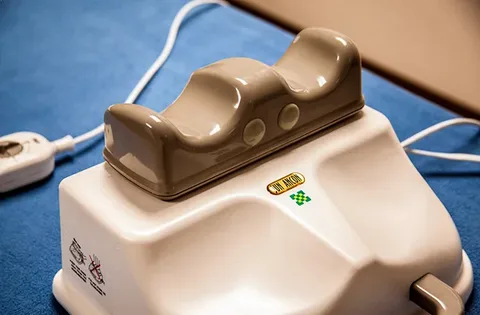Managing your NDIS plan can be a game-changer when it comes to improving your quality of life. However, sometimes, despite your best efforts, things just aren’t working out with your current NDIS provider. You may find yourself wondering, “Is it time to make a change?”
In this guide, we’ll help you understand when it’s time to consider changing your NDIS plan management provider, the signs that things might not be going as they should, and the steps to take before making a switch. We’ll focus on how this process impacts residents in Hobart and why making the right choice in disability plan management is crucial for your well-being.
Understanding NDIS Plan Management
Before diving into when and why to change your provider, it’s important to first understand what NDIS plan management is. The National Disability Insurance Scheme (NDIS) provides funding to individuals living with disabilities to access essential services, support, and equipment to help them live independently.
Your plan manager plays a key role in how that funding is allocated and spent. Depending on your plan type, your NDIS plan manager might:
- Assist with financial management, ensuring that your funds are spent correctly.
- Help you connect with service providers.
- Ensure that you’re getting the most out of your plan, by reviewing your goals and making adjustments as needed.
There are three main ways NDIS plans are managed:
- Self-managed – You control the funding and manage your services.
- Agency-managed – The NDIS agency handles the funding and pays providers directly.
- Plan-managed – A third-party provider manages your funds and services.
For Hobart residents, plan managers can be local or national providers, with many specialised services available to ensure your plan runs smoothly. But what happens when that support isn’t meeting your expectations? When do you need to consider a change?
Signs It’s Time to Change Your NDIS Plan Management Provider
There are a few telltale signs that it might be time to change your NDIS provider. The right provider can make your life easier, but the wrong one can add unnecessary stress. If any of the following resonate with your experience, it might be time to make a change.
1. Inconsistent Communication and Support
One of the most common reasons people consider changing their NDIS provider is poor communication. If your plan manager isn’t keeping you informed or doesn’t respond in a timely manner when you have questions, it can cause a lot of frustration.
You rely on your plan manager to answer questions about your budget, the services you’re receiving, and any adjustments that might be necessary. Without clear communication, it’s easy to feel disconnected or unsupported in managing your NDIS plan.
If you find yourself constantly chasing up emails, waiting for updates, or needing to clarify your plan, this could be a sign that your provider isn’t meeting your needs. Hobart residents, in particular, may prefer working with someone local who can provide quick responses and personalised support.
2. Failure to Meet Financial Management Needs
A key aspect of your disability plan management is the financial oversight. Your NDIS provider should be ensuring that your funds are being used efficiently and that services are paid for in a timely manner.
If you’re experiencing delayed payments, incorrect billing, or overspending in certain categories, your plan may not be managed properly. According to the NDIS Quarterly Report, financial issues like these are one of the most common reasons people seek a change of plan manager.
Your NDIS provider should help you stay within your budget and ensure that your funds are allocated correctly, based on the goals set out in your plan. If this isn’t happening, it could leave you in a difficult position where you miss out on essential supports or face unnecessary stress trying to manage your funds.
3. Lack of Personalisation and Understanding of Your Needs
Your NDIS plan is designed specifically around your needs, so it’s essential that your plan manager understands those needs. If your provider is offering a one-size-fits-all approach and isn’t taking the time to personalise your plan, that’s a major red flag.
In Hobart, you may have unique needs based on your disability, lifestyle, or goals. If your provider isn’t adapting your plan to these needs, or if you feel like you’re not receiving the services or support you deserve, it could be time to consider switching.
For example, if you’re not getting enough support with daily tasks or you’re being given less critical services, a more personalised approach could help you better achieve your goals. If your care plan management feels impersonal or doesn’t align with your goals, it’s worth reassessing.
4. Not Achieving Your NDIS Goals
At the core of your NDIS plan are the goals you’ve set for yourself, such as improving your independence, gaining employment, or managing daily tasks. If you’re not seeing progress toward those goals, it’s a sign that something isn’t right with your plan management.
Your provider should be checking in with you regularly to assess whether your goals are being met and if changes need to be made to ensure they’re achievable. If your goals are consistently unmet and you aren’t receiving the support you need, it could be time to switch to a provider who will work more closely with you to achieve those goals.
Steps to Take Before Changing Your NDIS Provider
If you’ve recognized one or more of the signs mentioned above, it’s time to think about changing your NDIS provider. But before making that leap, there are a few steps you can take to ensure that the transition goes smoothly.
1. Review Your Current NDIS Plan
Before changing your provider, take a look at your current NDIS plan. Are your goals still relevant? Do your needs still align with the services you’re receiving? It’s always a good idea to review your plan and identify whether your current provider is fully meeting your needs or if there are areas that can be improved.
This is also a good time to review how your NDIS funds are allocated. Are you spending money efficiently across different categories? Understanding your current plan will help you communicate your needs to your new provider when the time comes.
2. Document Your Issues
It’s helpful to document your concerns, whether they relate to communication, financial management, or missed services. Keep a record of any issues that have led to your dissatisfaction. This will make it easier to explain your concerns to your new provider and ensure that the same mistakes aren’t repeated.
3. Reach Out to Your Current Provider
Before switching, it’s always a good idea to have a conversation with your current NDIS provider. Sometimes issues can be resolved with clear communication. They may not even realise you’re unhappy with their services, and discussing your concerns could lead to improvements.
If you still feel that things aren’t working, you can then move forward with the process of switching providers.
4. Find a New Provider
Now comes the fun part: finding a new NDIS provider that meets your needs. Look for a provider who offers the specific services you require and has a good reputation for customer service, financial management, and achieving client goals.
In Hobart, you can find local providers that offer care plan management and disability plan management, making it easier to find someone who understands your unique needs. If you’re looking for a provider who can offer more personalised services, local companies often excel at this.
How to Choose the Right NDIS Provider
When choosing a new provider, consider the following:
- Experience and Reputation: Look for a provider with a solid track record in NDIS plan management. Reviews and recommendations from others in your community, or other Hobart residents, can help guide your decision.
- Personalisation: Choose a provider that listens to your goals and tailors their services to meet those needs.
- Transparent Communication: A great provider will keep you informed about your NDIS funds, payments, and services, ensuring that you’re always in the loop.
- Customer Support: Good customer support is crucial. Your new provider should be responsive and easy to reach whenever you need help.
Conclusion
Making the decision to change your NDIS plan management provider isn’t easy, but it can have a significant impact on your quality of life. If your current provider isn’t meeting your needs, whether it’s due to poor communication, financial mismanagement, or a lack of personalised support, it’s time to consider switching.
By carefully reviewing your current plan, documenting your concerns, and researching local providers in Hobart, you can find a new provider who will help you manage your NDIS plan effectively, meet your goals, and get the most out of your NDIS funding.
Remember, your NDIS plan management is all about supporting you, so don’t be afraid to make a change if it means improving your experience and achieving your goals.















































